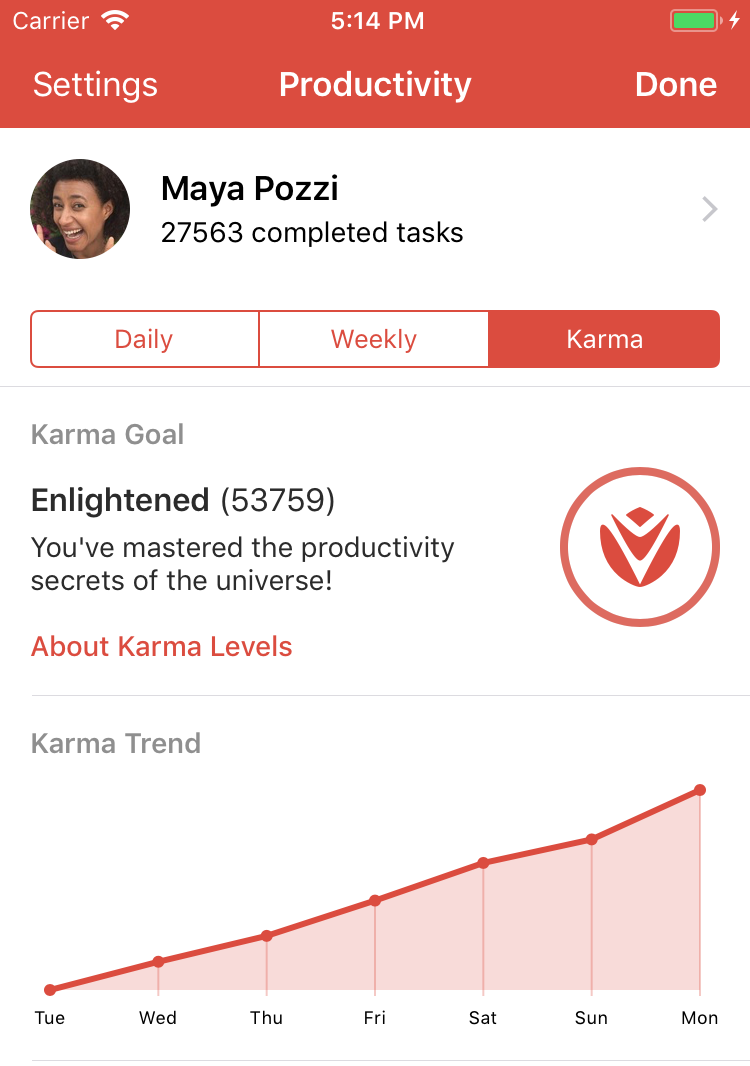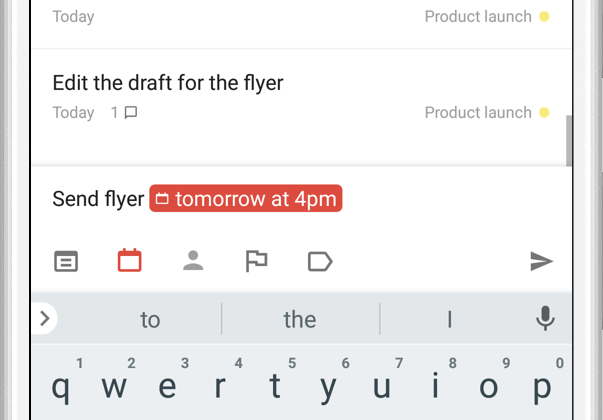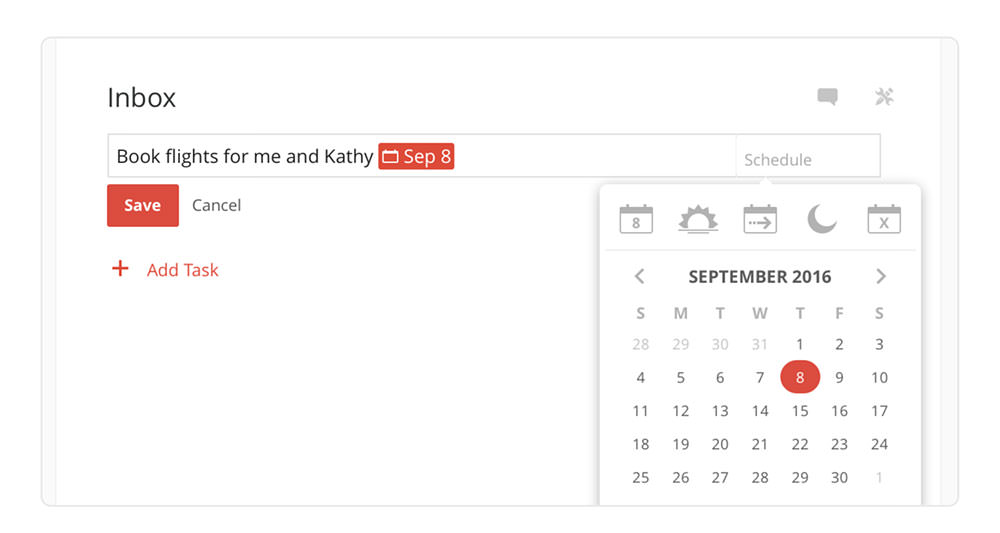For instance, when using Android Wear, simply speak, “Okay, Google, start to-do list,” and speak the name of the task. You can create due dates by using natural language like, “every two weeks starting today.” These tasks will instantly appear in your Todoist Inbox. Create a Trello card every. Todoist links with my Google Calendar so I don’t need to update more than one application. I’m going to end the written blog part here for those who are familiar with both Bullet Journal and Todoist, I’m going to come back and create a part 2 with exactly how I set Todoist up and how I am currently using it to collect things in my life. Keep your productivity at peak efficiency by cutting out all those tedious manual processes—like copying tasks across multiple lists. Once it's set up, this Week Plan Todoist integration will take care of that for you by creating a Todoist task automatically for every new Week Plan task it detects.
I’ve probably used Todoist every single day since 2007. It’s my personal operating system where I have everything I need to do all in one place (both work related and personal things). For instance, when using Android Wear, simply speak, “Okay, Google, start to-do list,” and speak the name of the task. You can create due dates by using natural language like, “every two weeks starting today.” These tasks will instantly appear in your Todoist Inbox. Create a Trello card every time you create a new task.

Here we go with part 2 of Bullet Journaling using Todoist. It's been a while since I published part 1 of this series, and that's probably okay because it has really given me a chance to see if the bullet journal format I originally talked about works in the long run. I've had a few changes, most are cosmetic in nature, and/or to simplify the process reducing the number of clicks or movement of an item.
As I pointed out in part 1 the 'index' talked about in the bullet journal is automatically created in Todoist. The 'future log' has become a central component of my workflow and I have consolidated the 'daily log' under each month as pictured below.
Note, I use “Future Log temp” as a place to capture routine items such as “Take recycling to curb” which occurs every other week. It’s something I have to do, but I don’t want the reminder clogging up my really important items that may or may not occur on the same day. Reminders are typically set up with Todoist automatic move forward or a single date in the future that I want to see the item again. A good example of this would be a phone call to my Dentist. I want to be reminded of it, but not until after the first of the year. When it shows up in my Today Box, I’ll move it to Daily Log and treat it like any other call. Other items captured under the Future Log Temp list are: “Email - Zero” (daily), Items I’m waiting for, and “Water Softener check and fill” to name a few. Mariyaan movie download hd.
Consolidating daily logs under future logs simply made it easier to archive each month. As future meetings, events and tasks are completed, new daily logs of activities and notes are created. At the end of the month, I could simply drag and drop the entire month to my archive storage location. This seemed to work fine for a while until I needed to search for something. The Todoist search engine is fine but with all the daily histories it simply became too crowded with the 'history' side of a bullet journal.
I also expanded flags to more closely resemble Getting Things Done methodology perhaps because I am used to the context format of GTD I use at work. So here is the mishmash process I currently find to be extremely functional for my personal productivity.
First: To use Getting Things Done verbiage, I use a separate program for all my 20,000 and up categories. In other words, my purpose, vision, roles, and goals I keep separate on another program called The Brain. A type of mind mapping software, I have used since 2005. It currently contains 30,424 “thoughts” which include journal entries, trip reports, lists of peaks, hikes, books I’ve read etc. It also contains 48,519 links between those thoughts as I chase down rabbit trails, which contain my roles and goals. I’ve tried on numerous occasions to use The Brain for actions and perhaps if I sat at a single computer all day it would work just fine. For me, Todoist exists simply for the 10,000-foot runway items in getting things done. This has helped me keep Todoist crisp, clean, and straight forward.
Second: I use a future log for each month of the year, twelve months in advance. When I start a new month - December 2019 - as an example, I create December 2020 at the bottom of the future log list. This makes it easy to capture rolling dates like birthdays and Christmas.
Third: I use a daily log captured under the monthly-future log.
Click on the month and I can see all of my monthly commitments organized or sorted in date order (option found under the 3 dot project menu). I can scroll down if I want to see daily items, but I don't generally do this because:
Fourth: Daily items run from newest to oldest. Part of the reason it runs this way is to avoid dragging and dropping each day to reverse order upon creation of the daily log.
Fifth: I don't keep historical information on Todoist anymore. I use Todoist in the way that Todoist excels at, namely items and lists. Each day I capture items, notes, thoughts, ideas, books I want to read, articles I should read, company reports, Christmas cards I should respond to etc. All that capturing needs to be done under the daily log. Years ago I read a blog article by Jason Womack who at the time, was a coach for Getting Things Done.
I don't write things down to get them done. Whether they get done or not is up to future events unfolding in an order that may facilitate productive/efficient choice-making. I write things down to forget about them; get them out of my mind, and come back to where I am..when I am

This is what I use Todoist daily log for. Capture items, by writing them down. The beauty of Todoist is it’s multi platform ability. In a line at the store, I use my phone, at work I use my work computer, home I use either my home computer or notebook. Have a thought while reading? Open Todoist and jot it down. You can set Todoist up to capture voice messages, Google Home can be set up to capture items into the inbox. Truly there shouldn’t be a thought you think that you can’t capture if you need to. Thankfully we don’t need to capture all of them, but gone should be the days of thinking “oh I need to write that down before I forget it”. I use the flags discussed above to put items into context if needed. Does the item need to be done at work? @Office, Is it a call? @Call, Putting up Christmas decorations? @Home-indoors. Including transferring the note, reference material to my personal brain, I use @PBrain. I then use the Autofocus System to process my items.
The autofocus system is designed to be on paper or notebook, but I find it easily adapts to Todoist and the daily log. The concept is simple. 'As you think of a new item, add them to the end of the list' or in this case add them to the daily log. Click on the daily log 2019-12-15, click on the + button and type in the item. Bullet Journaling is correct in its assumption of capturing notes in short phrases, getting them into the system and reviewing at a more appropriate time.
The quoted numbered items below are from autofocus and I think the magic to using Todoist for Bullet Journaling and productivity.
Video explosion deluxe free download. 1. Read quickly through all the items on the page without taking action on any of them.

Scroll to the oldest day in your Daily Log, remember this could be last month, although I try to not let them get that old (see number 7 below).

2. Go through the page more slowly looking at the items in order until one stands out for you.
3. Work on that item for as long as you feel like doing so.
This is the real secret to getting things done, get started on something. I like this format of scanning, looking, thinking and using your intuition to help pick an item. It also helps when personal energy levels are low and you might be cherry picking the easiest items on the list, but the concept is the same, if it’s on the list and it catches your attention then it probably needs to be done. In the picture above note the item: Install: Furnace Filter (every 3 months from install date). Upon reading this item, I went downstairs to install a new filter and found that I didn’t have any new ones remaining. New todo item: Buy: 2 Ace Filters and tagged as an Errand. You’ll learn in 4 below that I brought this item to the current date and added the new todo item. I worked on the item “as long as I felt like doing so” or in this case, as far as I was able.
4. Autofocus says to Cross the item off the list, and re-enter it at the end of the list if you haven't finished it.
In Todoist it is more productive and requires less keystrokes to simply hashtag #todays-date to move the item forward. (I generally make a note about what I accomplished before moving the item). Keep in mind that this is where David Allen’s GTD methodology regarding next actions should apply. Whatever is listed should be morphing from a random thought that you captured into a doable action. Also in the picture above “Print and mail: Marilyn Christmas Letter”. This was originally captured as Respond: Christmas card received from Marilyn. It moved forward as Write: Marilyn Christmas Letter where I used the comments section of Todoist to capture my letter over a couple days, moving forward each day. After I print and mail the letter, I will complete the item. Another item that occurs regularly for me is a book I want to read. When I first download the book it is added to the daily log as Read: Tribe (Kindle unlimited). When I start to read the book, it is moved forward to today’s date with Reading: Tribe (Kindle unlimited). It moves forward almost daily as I read the book, then changes to Finished reading: Tribe (Kindle unlimited) @PBrain. The label reminds me to add the book to The Brain journal entry along with my review of the book. I then complete the item on Todoist.
5. Continue going around the same page in the same way. Don't move onto the next page (date) until you complete a pass of the page without any item standing out. (this can be done quite quickly)
6. Move to the next page (date) and repeat the process.
Remember, you don’t have to take action on an item on every page, just look for ones that you are ready to make some movement on. In a sense this closely resembles Structured Procrastination.
7. If you go to a page and no item stands out for you on your first pass through it, then all the outstanding items on that page are dismissed without re-entering them.
Carton design software free. This is the critical behavior of reviewing all of your captured items from oldest to newest. At some point you really have to question if you are going to read that magazine that is now a month or month's old. If it no longer stands out, complete it off the list and throw the magazine into the trash.
Todoist Every Two Weeks Meaning
8. Once you've finished with the final page (today date), re-start on the first page (date) that is still active.
Todoist Daily Task
I delete the date in the daily log when there are no longer any items listed for that day (EDIT: If you are wanting to keep a true Bullet Journal do not delete the date, complete the task, but keep the date so that you can refer to Todoist’s “show completed tasks” if desired). This keeps my Todoist clean and helps me to focus my energy only on those items that continue to hold my attention. Ideally, a date in the daily log should be zeroed out over the course of a month or two, meaning no items should remain in the daily log for that date. If I’m not bringing an item forward to a more current date (meaning I’ve taken no action on the item, see #3 & #4 above) for months, this means I can’t reform the task into a more specific doable action, or I can’t figure out what the exact next step is that needs to be done to be able to complete the task, or I just can’t bring myself to spend a couple minutes on an item. If this is the case, the item needs to be deleted from the daily log. The item might show up again in the future, but as Jason Womack indicated; That’s not really up to me, it’s up to “future events unfolding in an order that may facilitate… choice-making.” It’s my job to capture those items and create an environment where making that choice is facilitated in an efficient manner.
